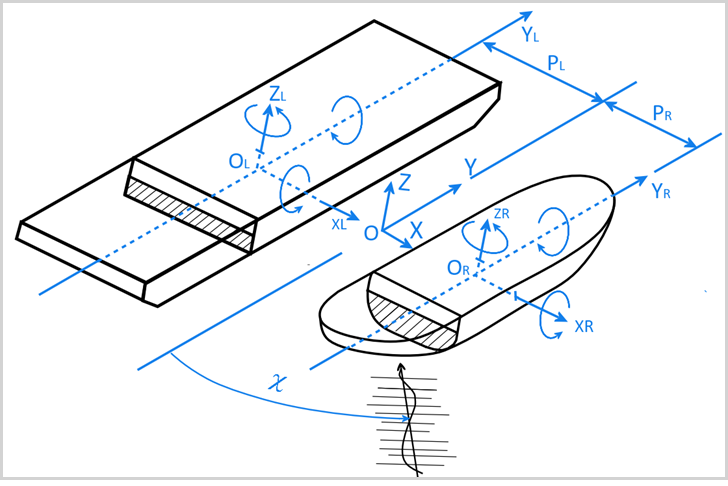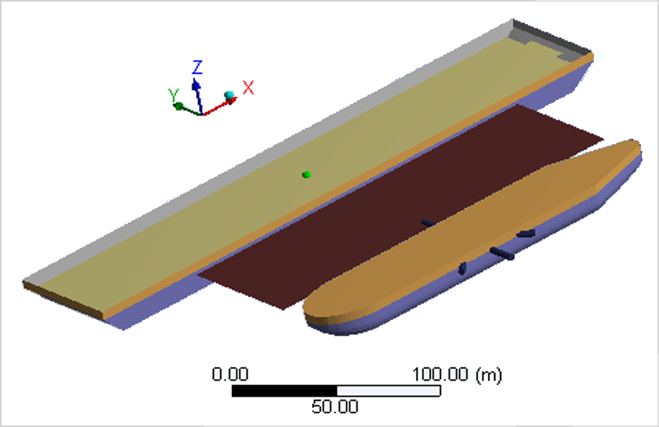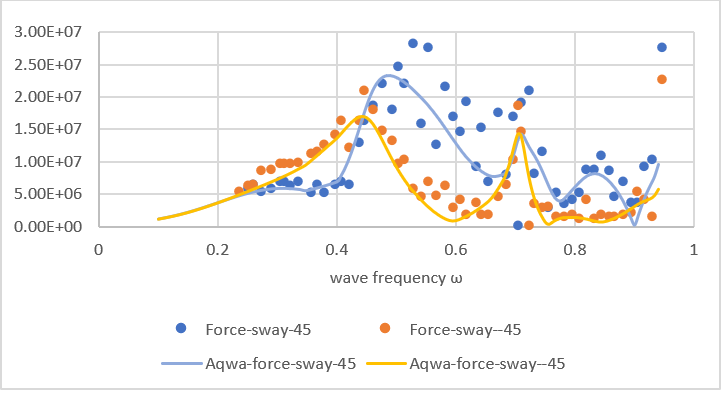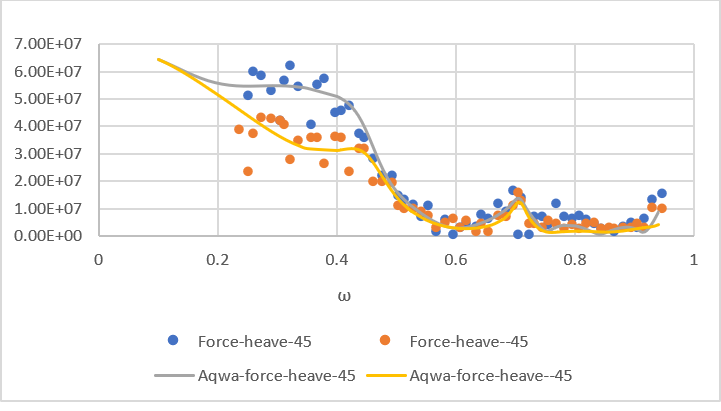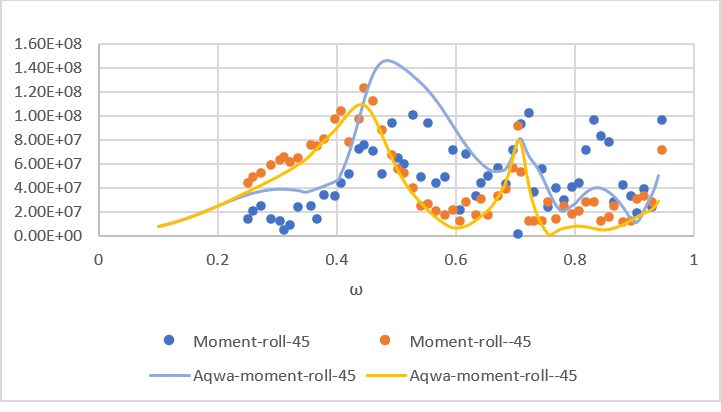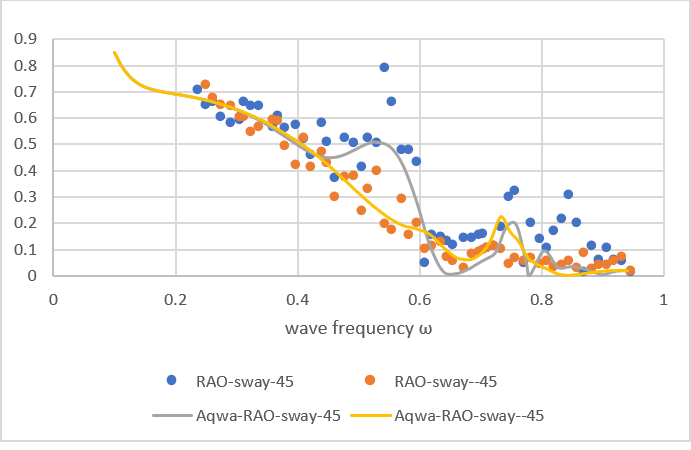VM-AQWA-MECH-003
VM-AQWA-MECH-003
Motions of Adjacent Floating Structures in Oblique Waves
Overview
| References: |
Kodan, N. (1984). The motions of adjacent floating structures in oblique waves. Proceedings of theThird International Offshore Mechanics and Artic Engineering Symposium. New Orleans. 1(1), 206-213. |
| Analysis Type(s): | Rigid Body Dynamics |
Test Case
Two parallel, slender structures– a barge and a boat– are in oblique waves. Model these objects in Ansys Aqwa and analyze the hydrodynamic interaction between them. Compare the results to those in the reference (Kodan, 1984).
Principal Dimensions of the Model
Modeling Notes
In order for the Aqwa program to run properly, the Kodan's experimental models have been enlarged by a factor of a hundred. The new dimensions are shown in the table below.
| Aqwa Model Barge | Aqwa Model Ship | |
| Length, LS | 312.5 m | 208.7 m |
| Draft, dR | 11.3 m | 13.10 m |
| Displacement | 2.03e5 m3 | 8.1e4 |
| Water plane area, AWR | 1.875e4 m2 | 6.85e3 |
| GMT | 22.8 m | 7.7 m |
| GML | 746.6 m | 251.5 m |
| COG above base line | 10.60 m | 8.0 m |
| PL | 1.20 m | 120.0 m |
Additional Parameters
Lid Damping Factor: damp = 0.01
Gap for external lid: gap = 71.55 m
Additional Key parameters:
Central distance between the barge and ship model: PL = 1.2 m
Forward speed of the ship model: Fr = 0
Wave direction: 𝛘=45 degrees and -45 degrees
Results Comparison
The figures below compare the results generated by Aqwa with the experimental results in the reference. As you will see, Aqwa's results track well with the experimental data. (Note: Experimental results of the wave exciting forces/moment and wave frequency have been dimensionalized.)
Dots in the graphs represent experimental data from the reference. Blue curves show the results when wave direction is 45 degrees, while the orange/yellow curves show the results for wave direction equalling -45 degrees.
Amplitudes of Wave Exciting Forces/Moment
Wave exciting force/moment (diffraction and F-K force) in sway, heave, roll direction (Global Y, Z, RX components) along the wave frequency
RAO
RAO (Distance/Rotation) in sway and heave direction (Global Y, Z components) along wave frequency



